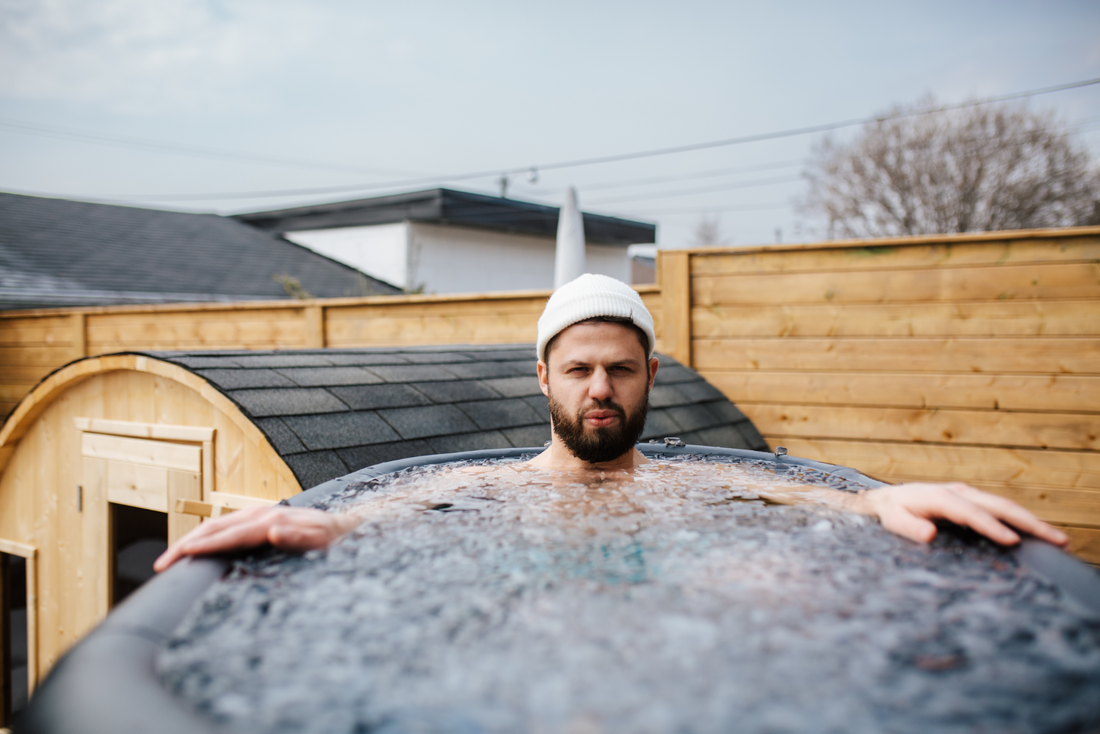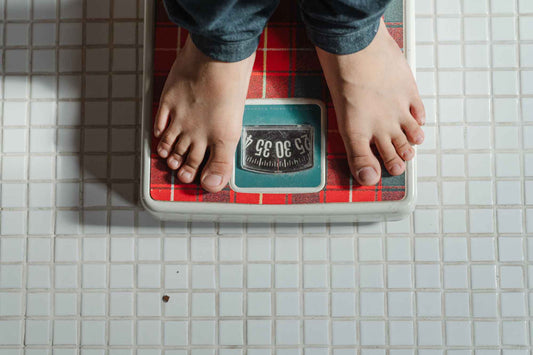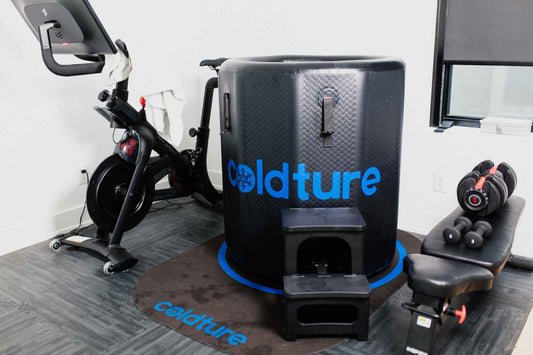Can ice baths truly contribute to weight loss? If you're thinking of embarking on this chilly journey, you've probably already heard of this cold exposure benefit, as it's all over social media! So, we're here to help you discover the connection between cold exposure and shedding those extra pounds!
This article investigates the benefits of ice bath for weight loss, providing a straightforward look at how thermogenesis and metabolism come into play. Keep reading to learn more about how cold temperatures affect body fat and calorie burning!
Key Takeaways
- Ice baths may enhance weight loss by increasing energy expenditure, boosting our metabolism, activating brown adipose tissue, and improving insulin sensitivity.
- Ice bathing triggers shivering and non-shivering thermogenesis, both being extremely useful in burning calories and reducing body fat.
- Ice baths can also help reduce chronic inflammation. There's a strong link between chronic inflammation and weight gain.
- While ice baths can serve as an adjunct to weight loss, they can only be used as complementary therapy. Combine cold therapy with regular exercise and a balanced diet for the best results.
The Science Behind Ice Baths and Fat Burning

To understand the relationship between cold water immersion and weight loss, we must first discuss energy expenditure and energy intake.
Energy expenditure is the amount of energy you burn. Energy intake is the caloric content of the food you're consuming. The balance between energy intake and energy expenditure determines your body weight.
About 60-80% of our total daily energy expenditure consists of resting energy expenditure. This means that the adipose tissue doesn't burn too much energy, which is where activity comes into play. However, there's another way to increase the resting energy expenditure - by exposing ourselves to cold.
Our resting energy expenditure can adapt to temperature changes. So when we're cold, our energy expenditure increases because we have to stay warm. This process is called cold-induced thermogenesis. An effective cold-induced thermogenesis is ensured by the activation of brown fat, also known as brown adipose tissue. But what exactly is brown fat, how is it linked to weight loss, and how does cold activate it?
Brown Adipose Tissue (BAT) and Weight Loss
Brown adipose tissue (BAT), primarily located in your neck and shoulder areas, plays a significant role in your body’s response to cold. Unlike white fat, which only stores energy and is found in higher amounts, BAT burns energy to produce heat. In other words, brown fat burns calories to keep you warm. This makes it a key player in your body’s metabolic processes and a potential aid in your weight loss journey. So, how exactly does cold activate brown fat?
Everything has to do with our sympathetic nervous system. The cold triggers the sympathetic nervous system, which, in turn, releases a key hormone and neurotransmitter. This compound activates brown adipose tissue by binding to adrenergic receptors. A study has shown that simply drinking cold water or ingesting crushed ice can activate brown fat!
As such, brown fat is our major thermogenic organ and it's activated in cold temperatures. Therefore, specialists speculate that ice bathing may one day be used to treat and prevent obesity. Scientists also believe that at low temperatures, even white fat cells can acquire the characteristics of brown fat cells.
Shivering and Non-Shivering Thermogenesis

When you step into an ice bath, your body kicks off a process known as thermogenesis to combat the cold. There are two types of thermogenesis: shivering thermogenesis and non-shivering thermogenesis.
Shivering thermogenesis is when your teeth chatter and your muscles shake in response to the cold. This rapid contraction and relaxation of the muscles generates heat and helps maintain your core body temperature. This process also burns calories.
When it comes to cold plunging, shivering is often used as a sign that you should get out of the water. That's a bit confusing, right?! The thing is that experienced ice bathers learn how to control this shivering thermogenesis through breathing exercises. As such, if you're a beginner, shivering is a normal response until your body gets used to the cold. In time, you'll be able to enjoy the cold water through non-shivering thermogenesis. You'll rely on the shivering response as a sign that the cold has become too much.
Non-shivering thermogenesis involves the activation of brown fat cells. They generate heat without the physical act of shivering. It might seem like an unimportant distinction, right? The truth is that this difference in how your body generates heat can significantly affect your energy expenditure and, ultimately, your weight loss goals.
On the other hand, it's essential to note that this increased calorie burn can make you feel hungry once you get out of the water. So, you may be tempted to eat more to compensate for the burned calories.
The Impact of Cold Water Therapy on Insulin Sensitivity

Did you know that a cold plunge can boost your metabolism by 350%? This, coupled with the activation of brown fat, can improve your insulin sensitivity. But what does insulin sensitivity have to do with weight loss?
Insulin sensitivity (or low insulin resistance) helps lower blood sugar. Conversely, low insulin sensitivity (or insulin resistance) means that your body needs more insulin to lower blood glucose. As such, if you are insulin resistant, you won't be able to regulate blood sugar levels efficiently. Over time, this can lead to weight gain. The more insulin-resistant you are, the more difficult it is to lose weight. Why so? Because your body stores the excess blood sugar as fat.
Considering the above, cold temperatures can potentially play a role in improving insulin sensitivity. Nonetheless, more research is required to fully confirm this. That's why specialists do not recommend relying only on cold water immersion for weight loss, obesity prevention, and blood sugar regulation.
Ice Baths: Weight Loss and Inflammation

Chronic inflammation is often linked to metabolic dysfunction because it can alter our appetite. Inflammation may interfere with the normal function of our satiety hormones. In time, this can lead to overeating and weight gain.
In addition, chronic inflammation may also cause pain and fatigue. This, in turn, leads to a sedentary lifestyle, which increases the risk of gaining weight. Furthermore, inflammation limits our ability to process insulin, and, therefore, our blood glucose levels increase.
Then, when we add weight, our bodies experience hormonal and metabolic changes. These lead to high C-reactive protein levels, which determine how much inflammation is in our bodies. In other words, chronic inflammation may cause weight gain, and weight gain increases inflammation. It's a full circle.
So, what does cold have to do with any of these? Easy - cold water therapy has long been thought to reduce inflammation. Although further research is required to fully confirm this benefit, specialists are confident that this therapy can be used alongside other treatments to reduce chronic inflammation. Doctors often recommend it to patients with autoimmune diseases.
Therefore, by reducing inflammation in the body, cold water therapy can indirectly help you lose weight.
The Cold Hard Facts: How Many Calories Do Ice Baths Burn?

The number of calories you burn during an ice bath can vary based on several factors.
The participants of a study who were exposed to cold water for three hours burned 250 calories. This accounts for approximately 80 calories an hour. And they didn't even immerse in cold water! The participants were only dressed in cold suits through which cold water circulated. Therefore, whole-body cold water immersion can increase the number of burned calories.
While this might not seem like a lot, remember that every little bit counts when it comes to weight loss. When combined with regular exercise and a healthy diet, ice baths can certainly contribute to your overall calorie burn and weight loss goals.
Integrating Ice Baths into Your Weight Loss Journey
Ice baths burn fat and can indeed play a role in your weight loss journey. However, they should be viewed as a supplement rather than an alternative to a balanced diet and consistent physical activity. As such, consider integrating them into a holistic weight loss routine as a complementary tool. We strongly recommend working on a plan with your healthcare provider who is familiar with your health issues.
If you've agreed with your doctor that ice baths for weight loss are an option, here are some tips on how to safely integrate them into your routine!
Find High-Quality Cold Plunging Equipment

Before starting your cold plunging journey, you must equip yourself with high-quality equipment. An advanced cold plunge tub won't only help you regulate water temperature more efficiently but also prevent slips and injuries.
In this regard, you can contact Coldture anytime! Our cold plunge tubs are #1 in Canada - they're easy to use and maintain, are made of high-quality materials, and have well-insulated walls that keep the water cold for hours. We also sell absorbent mats that will prevent you from slipping when getting out of the tub. In addition, our water chiller allows you to control the temperature.
Don't forget that this practice should be enjoyable, and Coldture makes sure you'll take the best from it!
Starting Your Chilly Dips Safely
If you’re a beginner to ice baths, it’s important to start gently and securely:
- Begin with sessions lasting only 30-60 seconds. Add 15-30 seconds during each cold plunge session. This will allow your body to adapt to the cold naturally.
- As your tolerance develops, you can gradually extend the duration of your ice baths to 10-15 minutes for weight loss benefits.
- Additionally, it’s crucial to start with manageable cold temperatures, progressively making it colder to safely acclimate your body.
Before starting your ice bath journey, be aware of possible side effects. If possible, have someone accompany you, maybe even an experienced ice bather. You might also consider performing a cold-shower challenge to test your cold tolerance. Remember, safety first!
In addition, we strongly recommend learning some breathing exercises. They will help you control your body's response to cold and prevent shivering, hypothermia, and other adverse reactions.
The Soeberg Principle
The Soeberg Principle says that you should not warm up after a cold plunge. You should resist jumping into a hot shower. Instead, allow your body to warm up naturally.
This is especially true if you're practicing cold plunging for weight loss. Why so? Because in those two hours, until your body returns to normal, the brown adipose tissue and your metabolism will still work hard to keep you warm. Therefore, the benefits of your ice bath will be enhanced.
The Psychological Edge: Mental Health Benefits of Cold Plunges

The benefits of cold plunges extend beyond just weight loss. They can also play a significant role in improving your mental well-being. This, in turn, can indirectly affect your weight loss journey by helping you stay positive and diminishing your anxiety. Cold exposure can lead to significant increases in dopamine and the release of other mood-enhancing compounds, with a subsequent reduction in cortisol that can last for several days.
Furthermore, cold therapy also triggers the parasympathetic nervous system. Its main nerve is the Vagus nerve, which you most likely already heard about. It basically acts as a counterbalance for our fight-or-flight response. Therefore, its stimulation has long been associated with reduced anxiety and depression and increased relaxation.
Ice Bath Myths Debunked: Separating Fact from Fiction
Plenty of ice bath myths are floating around, so let’s separate fact from fiction. First, contrary to some beliefs, ice baths can be a safe and simple practice when performed correctly. Keeping your sessions short and at temperatures above 59°F (10°C) can ensure a safe experience and maximum benefits.
Another common myth is that ice baths can replace exercise and diet in a weight loss journey. While repetitive cold exposure may alter unhealthy fat to resemble healthy, metabolically active brown adipose tissue, ice baths should not be viewed as a standalone solution for weight loss.
Thirdly - are baths only for athletes? Definitely not! As long as a healthcare provider confirms it's safe, anyone can reap the benefits of cold plunging! If you follow the recommended guidelines, you'll eventually enjoy and look forward to your ice baths!
Ready to Use Cold Plunges to Lose Weight? Contact Coldture!
Ultimately, ice baths can be a powerful tool in your weight loss journey, offering countless benefits - from increased calorie burn to reduced inflammation and even mental health improvements.
However, ice baths should not be a standalone solution for weight loss. You should combine them with a healthy diet, regular exercise, and other recommendations provided by your doctor.
So why not give it a try? Contact Coldture for a free consultation - we'll answer any questions you might have regarding our cold plunging equipment!
Frequently Asked Questions
Can ice baths help me lose weight?
Ice baths can be a helpful tool in a comprehensive weight loss strategy. They can activate brown adipose tissue, boost your metabolism, and help you burn more calories.
How long should I stay in an ice bath for weight loss benefits?
Start with ice bath sessions lasting 1-2 minutes, gradually increasing to 10-15 minutes as your tolerance develops. This will help maximize weight loss benefits.
How many calories can I burn in an ice bath?
You can burn approximately 80 calories per hour when exposed to cold. It remains unknown exactly how many calories one can burn when fully immersed in ice-cold water because it depends on the temperature, duration, and other factors.
Can ice baths improve mental health?
Yes, regular cold water exposure can alleviate symptoms of anxiety and depression and contribute to enhanced mental well-being. This is linked to the release of dopamine and other mood-enhancing compounds, as well as the increase in beta-endorphin levels.
Are ice baths safe?
Yes, ice baths can be safe if done correctly by starting with manageable temperatures and short sessions. However, make sure to consult a healthcare professional before embarking on this journey. People with certain health conditions may not be allowed to practice ice bathing.





